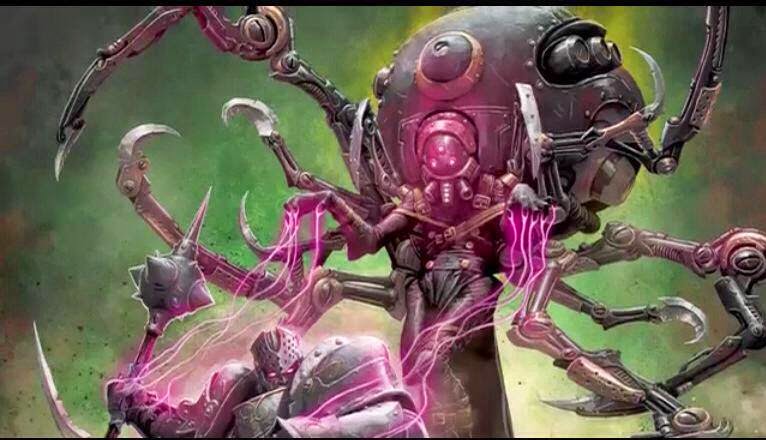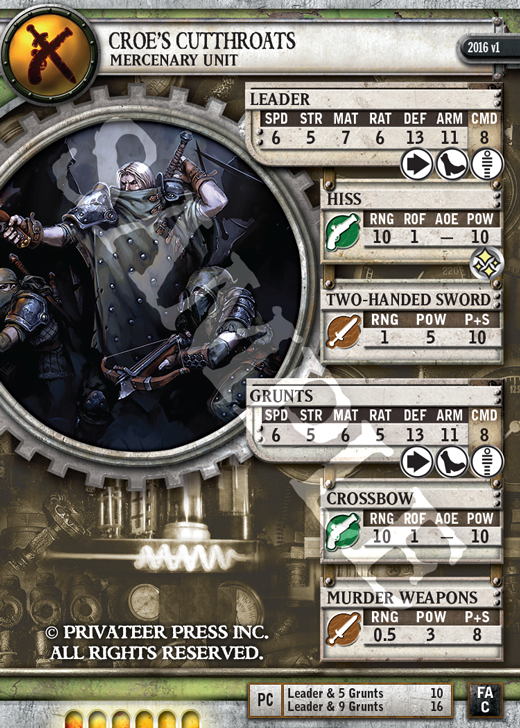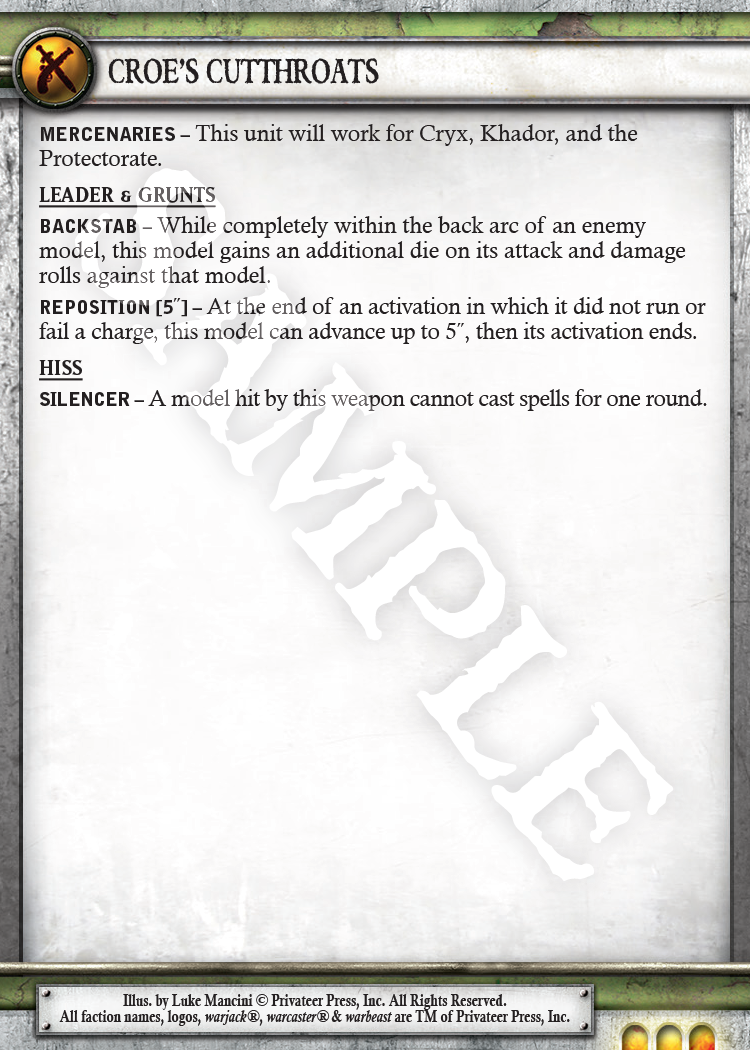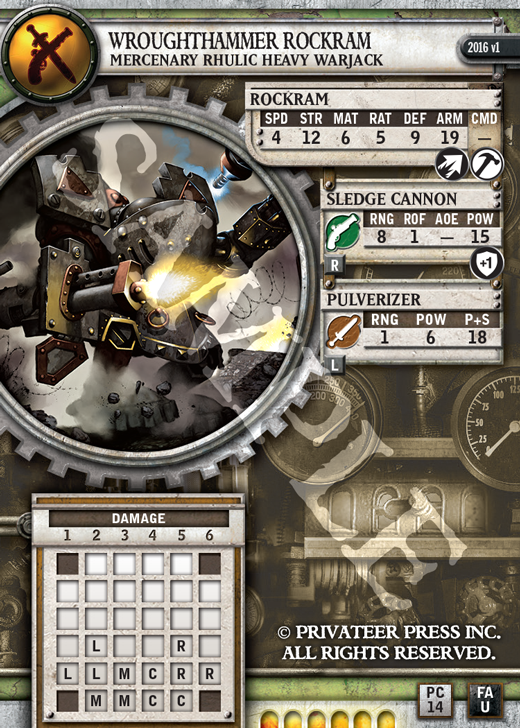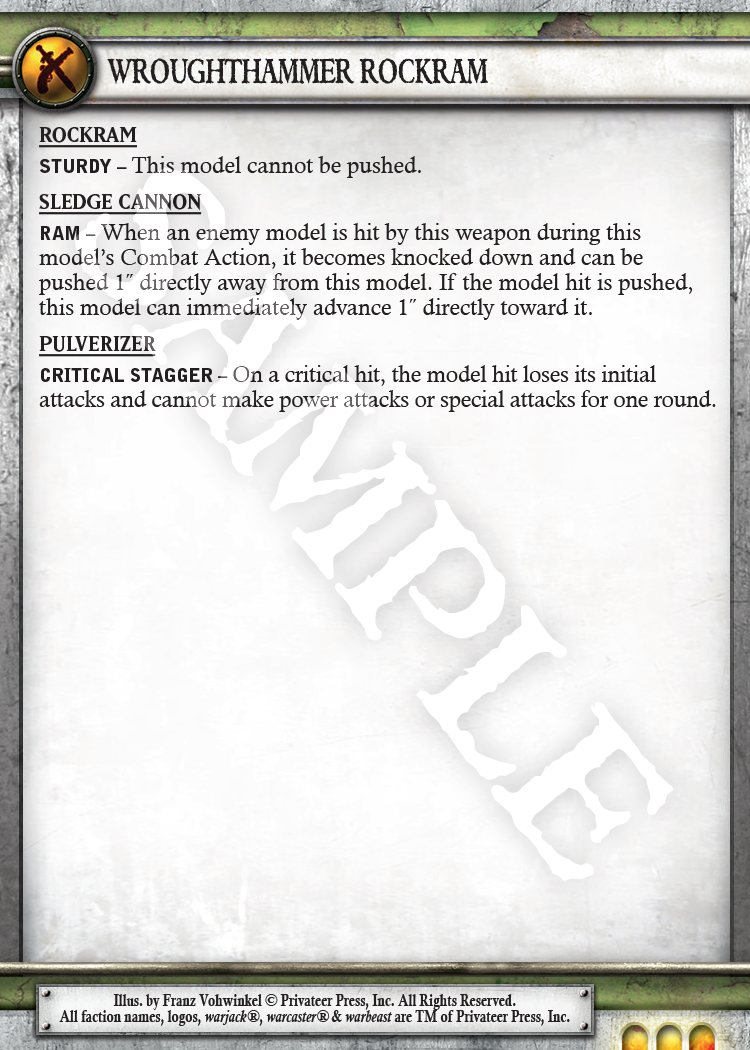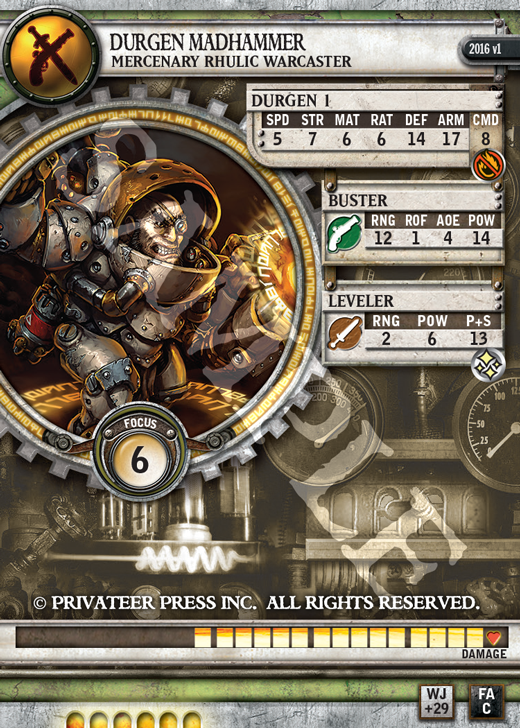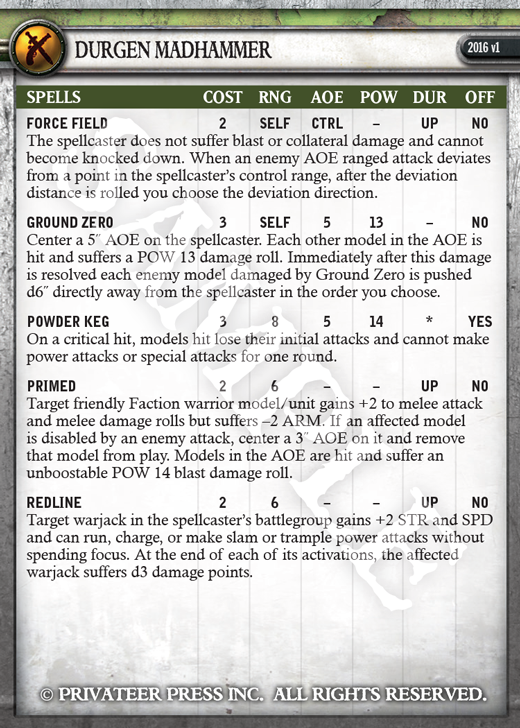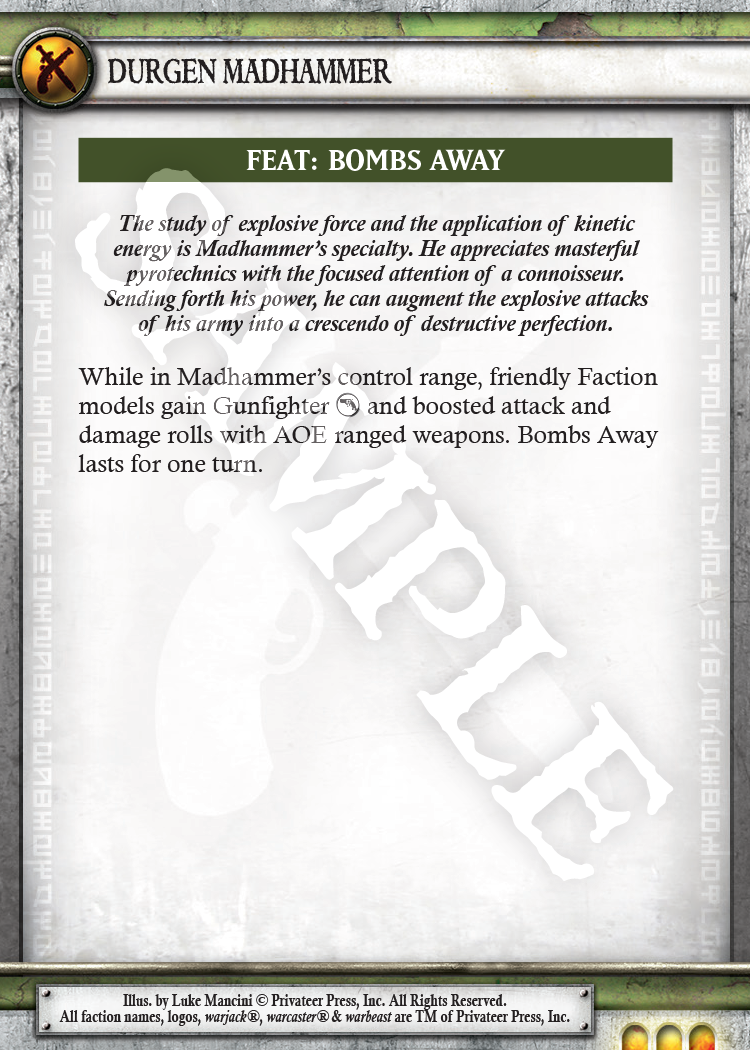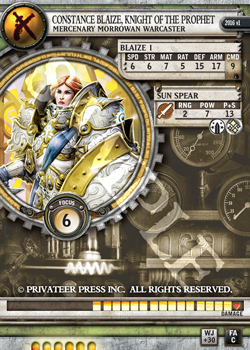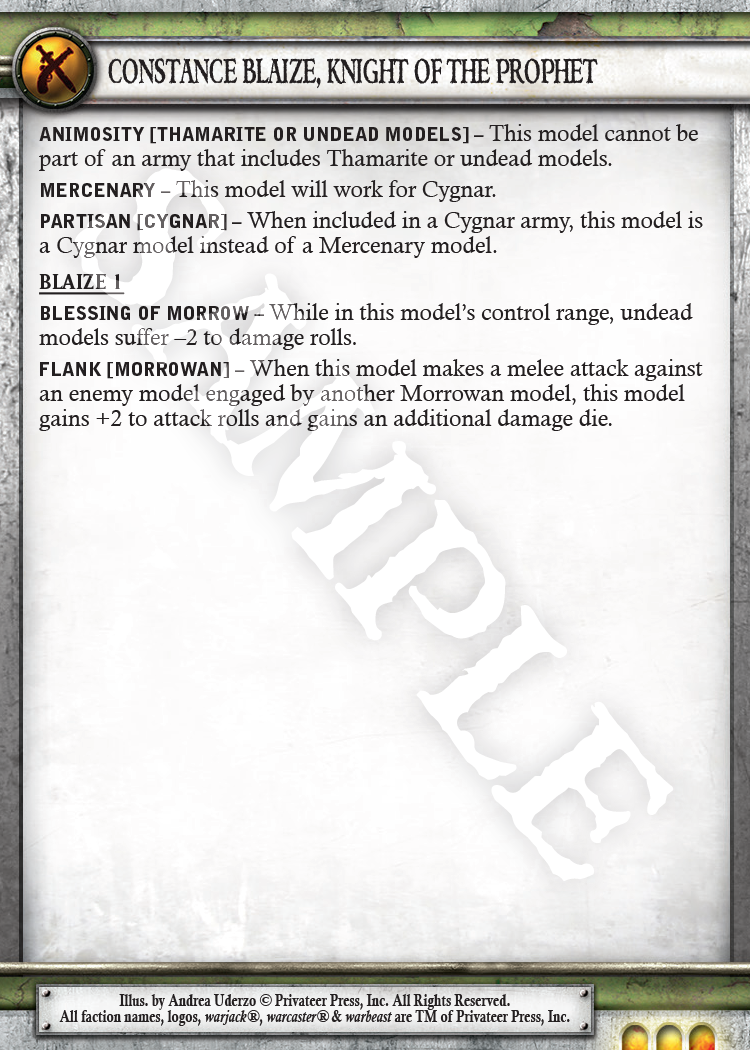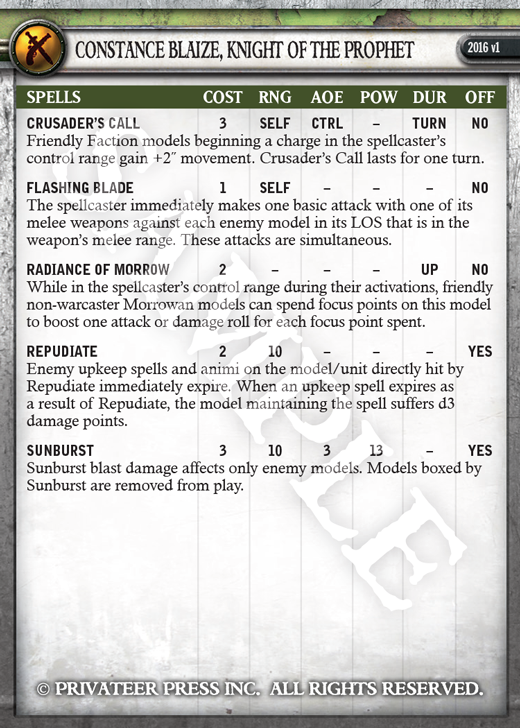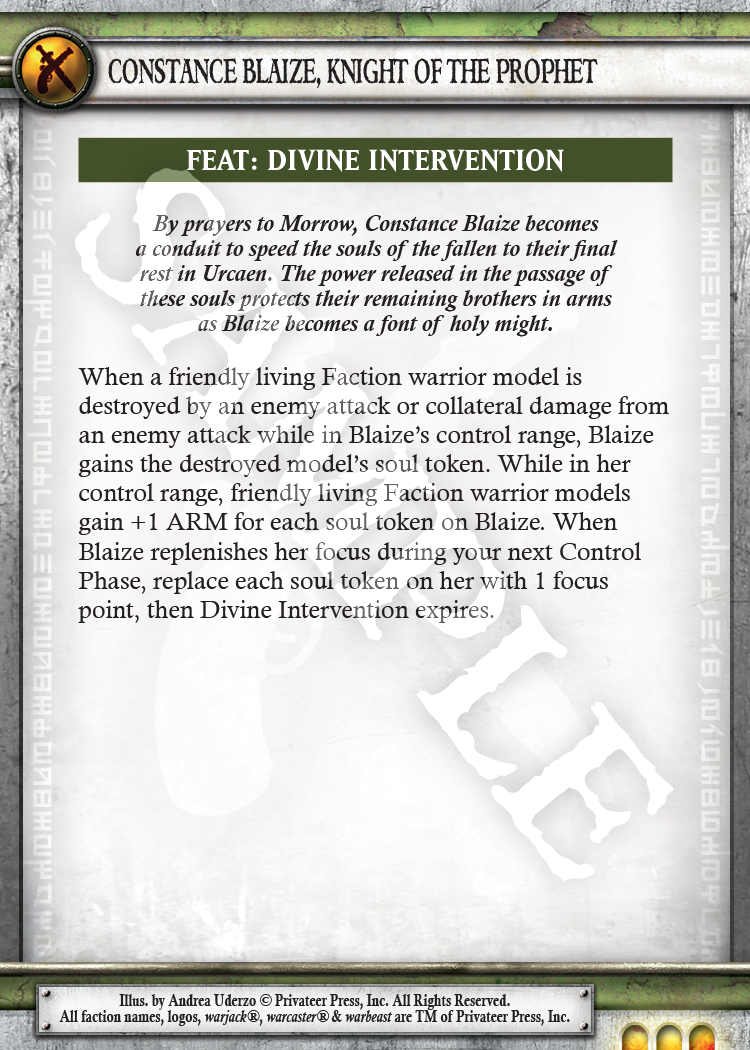Warmachine: Mercenaries in V3


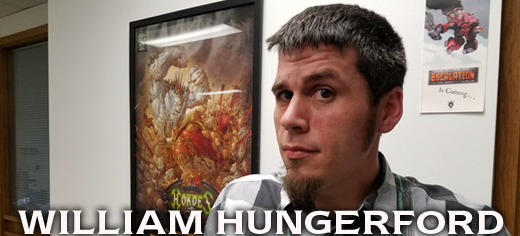
Our Faction review continues today with a close look at the opportunistic soldiers who battle for fame, fortune, and sometimes just for fun: the Mercenaries. You’ll often hear us speak about the concept of Faction identity, such as Khador’s resilience or Cryx’s swarm tactics, but doing so for Mercenaries can be a bit tricky. That’s because Mercenaries are, by definition, a mixed bag of many different play styles and identities.
Mercenaries are some of the most difficult models to balance in WARMACHINE & HORDES; Not only do these models need to be balanced within their own Faction, but they also need to be balanced within every other Faction they will work for. For example, when we balance a unit of Trencher Infantry, we first consider its strengths, weaknesses, and cost in comparison to the other options in Cygnar, and then we consider how this unit represents Cygnar’s Faction identity within WARMACHINE & HORDES as a whole. But for Mercenaries, things get a bit more complicated. When balancing a unit of Steelhead Riflemen, we have to apply the same criteria and then compare the model to all other units in Mercenaries, Cygnar, Khador, Cryx, and the Protectorate of Menoth. Simply put, a Mercenary model or unit cannot make a Faction choice obsolete by being too good. Similarly, it shouldn’t be so lackluster that a player would never consider including it.
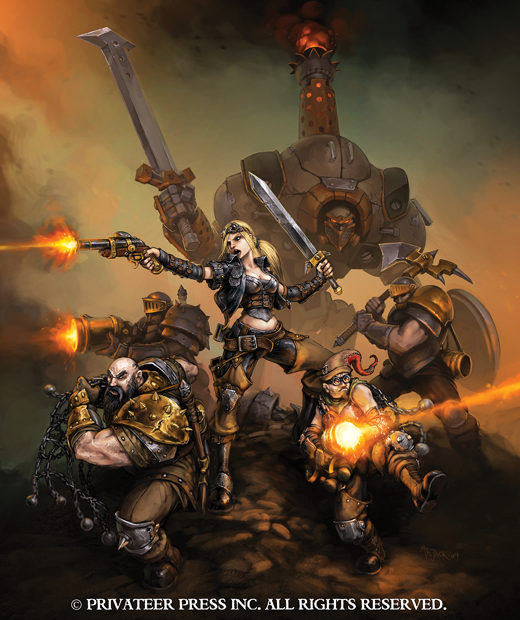
Mercenaries are designed to function as an independent army and to supplement a core Faction, shoring up some of that Faction’s weaknesses. It’s a tightrope act, to be sure!
Because the Faction is made up of different types of support models and units without one unifying theme, the possible army compositions and strategies really are limitless—and this is exactly what makes playing Mercenaries so entertaining.
While a Mercenary army may never be as resilient as a Khadoran army that’s dedicated to attrition or as disruptive as a Protectorate army that’s dedicated to denying an opponent’s strengths, they can do nearly as good a job—it all depends on how you build your army list. Mercenaries make up for this lack in extremely specialized strength by taking on a jack-of-all-trades approach and using their flexibility to support their weaknesses in unorthodox ways.
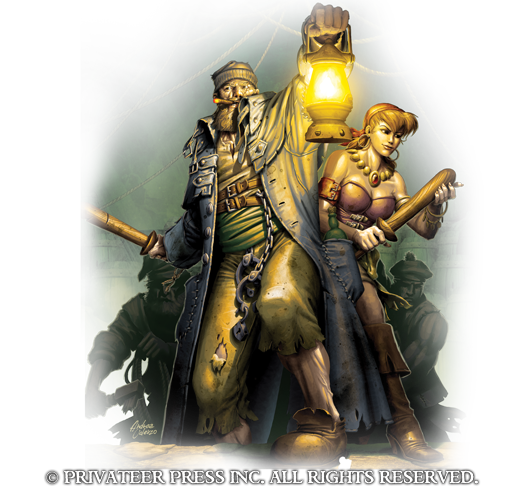
Another interesting challenge we encountered when rebalancing all Mercenary models was the abolishment of the contract system from Mk II. Now that almost every Mercenary model could work with any other Mercenary model, we had to carefully re-examine every single interaction to ensure that balance was maintained within the Faction itself.
Did you catch that almost in the previous sentence? Well, it was a reference to everyone’s favorite psychic villains: the Cephalyx! In the new edition of WARMACHINE, you can now put “picky” models together—such as Captain Phinneus Shae and Precursor Knights—but nearly every Cephalyx model (with the exception of the Cephalyx Overlords and Cephalyx Mind Slaver & Drudges, both Cryx Partisans) has the Limited Employment special rule, which states: “This model can be included only in an army made using a Cephalyx theme force.” Don’t worry, Cephalyx enthusiasts—the Cephalyx theme force is listed in Prime, so you’ll be ready to start playing on day one!
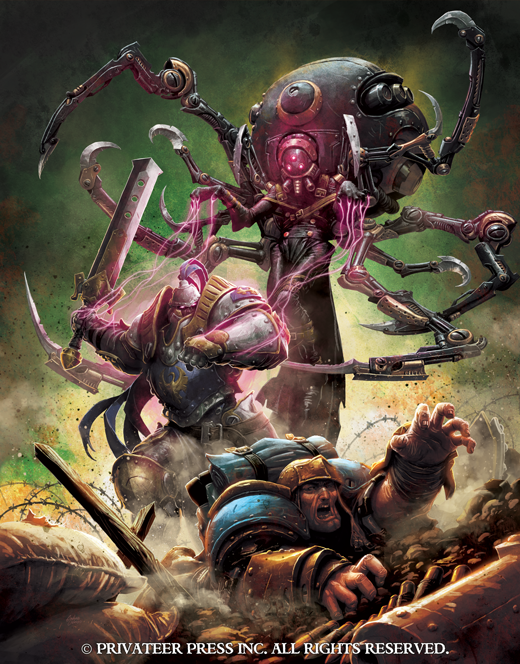
When reviewing the Cephalyx sub-theme and their niche within Mercenaries, we came across a thematic issue with the three Cryxian options that were available to the Puppet Masters in Mk II. The addition of Pistol Wraiths, Machine Wraiths, and Bloat Thralls (including Mobius) presented thematic and tabletop issues after the rebalancing of all models. Given the overall increase in Cephalyx efficiency and strength, the decision was made to remove these models from the Cephalyx theme force.
When I speak about increased Cephalyx efficiency and strength, one prime example is the incredibly powerful Rage-Fueled mechanic that is exclusive to Cephalyx monstrosities. It reads: “Though monstrosities can be allocated focus normally, they do not Power Up and do not automatically gain a focus point for being in their controlling warcaster’s control range during the Control Phase. Instead, a monstrosity gains 1 focus point each time it suffers damage as a result of an attack or a continuous effect. Note that monstrosities are not warjacks and focus points are not removed from them during the Control Phase.”
Another example of their increased efficiency and strength is that all non-warcaster Cephalyx models (not the mindless drudges but the Cephalyx themselves) traded the more situational Sacrificial Pawn ability for Stealth—a fantastic upgrade that will make taking out key models very difficult.
But that’s enough about the Cephalyx. Let’s take a look at a classic Mercenary unit, Croe’s Cutthroats, to dissect the changes we’ve introduced.
With the new rules language on Backstab, Croe’s Cutthroats pose a significant threat to your opponent at all times. Previously in Mk II, Backstab required the model to receive the back strike bonus, which meant activating in that model’s back arc. Now in the new edition of WARMACHINE, a Cutthroat can simply advance into a model’s back arc, no matter where it began its activation, and receive the Backstab bonus. Add to that the addition of Reposition [5˝], combined with Stealth and Pathfinder, and you’ve got this nightmare unit of murderers who are difficult to predict, highly mobile, and incredibly deadly.
To determine their full suite of skills and their point value, we now had to compare Cutthroats to every other unit within Mercenaries and Cryx and Khador and the Protectorate. What made this comparison less daunting was the new design philosophy that most Faction buffs, from spells or abilities, now only applied to friendly Faction models instead of friendly models. This meant we didn’t need to concern ourselves with the strength of Cutthroats with non-Mercenary warcasters. For example, the Iron Flesh spell now only affects friendly Faction models; so non-Mercenary warcasters with access to this spell did not need to be re-examined.
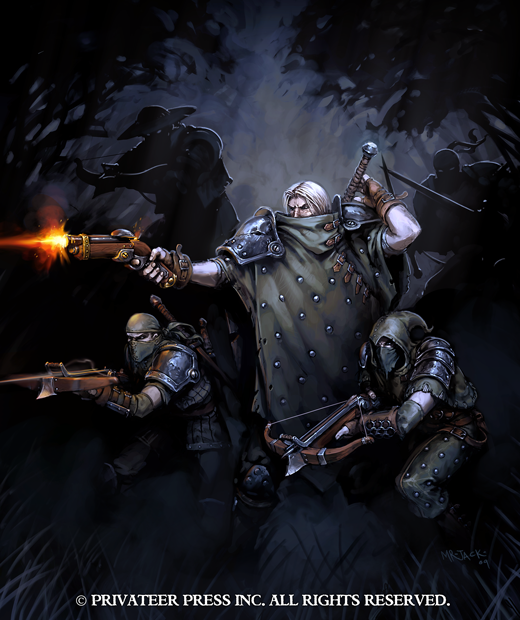
We had to playtest relentlessly to ensure Cutthroats were appropriately costed and did not overshadow other units in the Factions they worked for even without access to Faction specific buffs. A good comparison to look at would be Cutthroats versus Protectorate Exemplar Errants.
The Cutthroats provide a unique form of support with their quick mobility and Backstab efficiency that didn’t overlap the design space of other Factions, but like Errants, they are fast and flexible, they can deal damage at both ranged and in melee, and they can hit pretty hard. Additionally, Cutthroats have the exact same cost as Errants. After much testing and even more discussion, we determined that the cost on Cutthroats and the abilities they possessed were exactly where we wanted them to be.
A Mercenary player creating an army would likely compare Cutthroats to Cylena Raefyll and Nyss Hunters, and given the specific differences between their point cost, damage output, and survivability, the player would have a meaningful choice to make. A Protectorate player looking at Exemplar Errants vs Cutthroats would have a similarly meaningful choice to make, especially with the added layer of how much value the player placed on their Faction buffs. Repeating and examining this comparison process against all other appropriate units led us to the final card you see today.
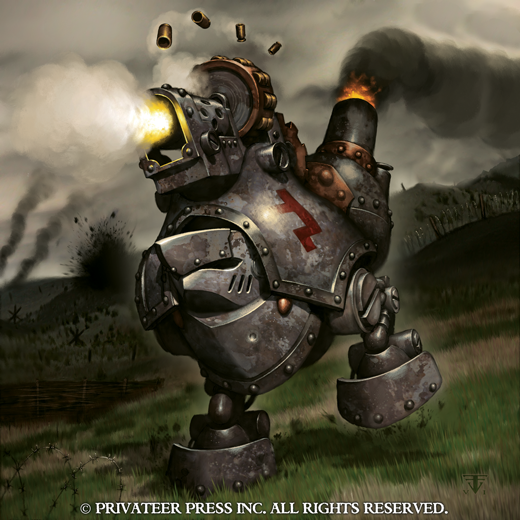
Another guiding light during development was to reinforce the various sub-themes found within Mercenaries for appropriate models. If you take a look at some of the contracts found in Mk II, you’ll know exactly what sub-themes we’re talking about. For example, Rhulic models are often hardy, a bit slow, and their warjacks are incredibly efficient for their point cost; Privateers employ swarm tactics backed by key solos, providing powerful buffs to the masses of sea dogs; Cephalyx provide heavy magic-based offense, backed by powerful monstrosities and waves of disposable infantry; and so on.
With the new focus on strengthening the role of the battlegroup in the new editions, rebalancing the various Mercenary warjacks was an absolute treat. Because Mercenary warjacks will rarely be seen outside of a Mercenary army, they required less cross-Faction examination. As a result, Mercenary warjacks can often be quite powerful, even in comparison to other Faction’s options.
Take a look at the Rhulic Wroughthammer Rockram, for instance.
This warjack is an absolute steal for its point value. The Rockram is a workhorse warjack, specialized in nothing, that’s capable of doing a lot of damage on the battlefield. At 14 points, this ’jack is roughly equivalent to 7 points in Mk II. Considering its stats and abilities and the new Power Up rule we’ve discussed in previous Insiders, this ’jack is very efficient for its cost.
The addition of the Ram special ability on the ’jack’s Sledge Cannon, combined with Assault and its newfound 1˝ melee range on its Pulverizer, means that this is a warjack your opponent must plan to deal with early on. If he doesn’t, the Rockram will run roughshod over his army. With access to a knockdown effect that threatens 15˝ on the table at all times and with little to no resource drain on the controlling warcaster, the Rockram opens up tactical opportunities in Mercenaries that were never this easy to pull off.
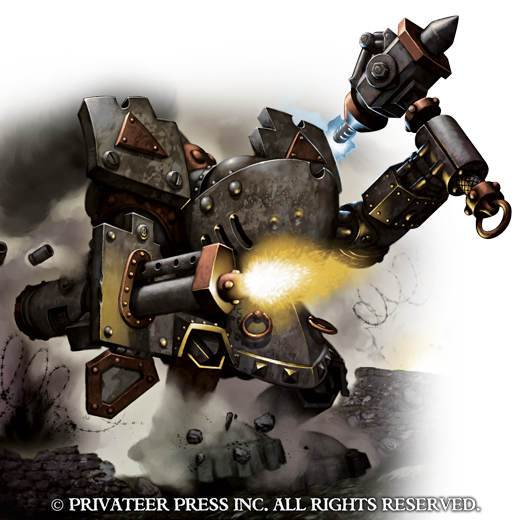
Want to run Rhulic “Pop-n-Drop” in a Durgen Madhammer army? Grab a pair of Rockrams and get ready for action. Speaking of a pair of Rockrams, that’s only 28 warjack points, the average amount that most warcasters have! Throw in a couple of Grundback Gunners, who are dirt cheap at only 6 points a piece, and you’ve already got a battlegroup that can execute a plan and mix things up in melee if the tide of battle shifts that direction.
I guess it wouldn’t be very fair of me to mention Durgen Madhammer without also discussing some of his changes. You know what the Rhulic master of destruction was missing? The ability to set everything on fire while the entire battlefield exploded. Luckily, thanks to his new Field Marshal, he can do just that. Check him out.
While I’m on the subject of Mercenary warcasters (or at least on the subject of showing off their cards), I want to talk about one of the most changed warcasters in the entire Faction: Constance Blaize. Oh, hey—I guess this technically counts as a Cygnar spoiler, too. Good for them.
Constance is easily one of the most punishing warcasters an Undead army can face, thanks to her new Blessing of Morrow ability. When you read the card, note that the -2 DMG this ability confers is in her control range, not command range. It’s also -2 DMG on ALL damage rolls. Even exploding Bile Thralls hit softer when in the presence of this holy warrior. Constance also traded her Banishing Ward spell for Repudiate, giving her some much-needed upkeep removal, a trait far more rare in the new edition. Anyway, enough talk! Check out Constance in all her glory!
We hope you’ve enjoyed this look into Mercenaries.
~More on V3 all month…

